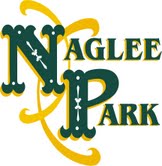Naglee Park Background
Naglee Park is a residential subdivision that was developed in 1902 on the grounds of the estate of Civil War Brig. General Henry Morris Naglee. Naglee was a California pioneer who is noted for his contributions to the California banking and viticulture industries. He lived in several locations in California; a San Francisco apartment, a large Rancho near Stockton and his country estate in San Jose. He also maintained a home in Philadelphia, his birthplace. His San Jose house and carriage house are located on the corner of 14th and San Fernando and are the oldest buildings in the neighborhood.
A stipulation in Naglee's will prevented his San Jose estate from being sold until his youngest daughter reached the age of 30. Nearly 20 years after Naglee's death his two daughters formed a development company, the Naglee Park Improvement Company (NPIC), to develop the San Jose estate as a residential subdivision.
Naglee Park development started in 1902. The first subdivision map was filed in the spring of 1902 by the Naglee Park Improvement Company, a small corporation formed by General Naglee's two daughters and their husbands. This type of residential subdivision was an unique concept for its time on the West Coast, although it borrowed development ideas that were already popular in eastern America. It was developed as a complete neighborhood with paved streets, utility easements and restrictive covenants limiting the size of the houses that could be built. Businesses were forbidden and stables were limited to the rear of the properties. Since Naglee Park was developed just as the automobile was being introduced, this subdivision shows the transition from the horse-and-buggy to the automobile.
California, Santa Clara County, San Jose and Naglee Park were in a building boom around the turn of the century. Economic prosperity and the growing fruit industry made Naglee Park a tremendous success. Similar developments soon opened in other parts of Santa Clara County; Hanchett Park and later, Palm Haven. By about 1910 the last of the Naglee Park home sites had been sold and the Naglee Park Improvement Corporation was disbanded.
The city of San Jose had grown up around Naglee Park. When Naglee Park was finally opened for development, it was the largest tract of land adjacent to Downtown. Convenient public transportation along Santa Clara Street made the area attractive to downtown merchants and businessmen who wanted homes near their businesses. So early Naglee Park residents include a substantial number of the Valley's doctors and dentists, bankers, attorneys and insurance men, merchants and fruit company managers.
Naglee Park Development
Naglee Park was opened in 1902. Only General Naglee's house was built at an earlier date, about 1865. The first part of the development opened along Santa Clara Street in 1902 and new blocks were opened as older sections were sold. So the older homes are along San Fernando Street; newer houses are closer to San Salvador and William.
Many houses south of William Street along 12th Street date from an earlier era, 1860-1900.
A "Victorian" house is one built during the reign of Queen Victoria of England. Victoria died in 1901, so there are very few houses in the Naglee Park area that can correctly be described as "Victorian".
General Naglee's house is located at the corner of 14th and San Fernando. Since it was built around 1865, it can legitimately be classified as Victorian house.
The streets in Naglee Park were named for the California missions.
When Naglee Park was built, the developed city of San Jose stopped at 11th Street. Although the city limits included the land to Coyote Creek, most of the town of San Jose was composed of small rural homes until well past the turn of the century.
The area just east of Naglee Park, on the other side of Coyote Creek, was a substantial little enclave with its own government, fire department and vital community life. Known as the town of East San Jose, it was annexed to San Jose about 1911.
The building permit system was well established in San Jose when the Naglee Park homes were under construction. Although building permits in the 1890's were simply a form of municipal tax, by 1902 architect Theodore Lenzen had reorganized the permit system to regulate standards of construction.
A building permit has been required for any plumbing, electrical or structural work, including building garages in Naglee Park since 1902. Unfortunately, the early building permits and the permit index for the years 1900-1910 have disappeared.
Naglee Park houses were equipped with city water, sewers, gas and electricity and telephones from the time they were built. San Jose Water Company was incorporated in 1866; San Jose Gas was incorporated in 1860 but used primarily for lighting until the turn of the century. Municipal electricity and telephone systems were in use in the 1890's. Since early electrical illumination systems were quite dim, gas lights were common until about 1910. Many early Naglee Park houses still show evidence of both systems.
An Important Note About Street Names
The numbered streets in Naglee Park originally alternated names and numbers. The old scheme was 11th, Whitney, 12th, Crittenden, 13th, Priest. The names were changed about 1911 to match the streets north of Santa Clara Street - 11th, 12th and so on, thru 17th. Researchers Take Note: The old address you are seeking on 13th Street may in fact be labeled as 12th Street.
Local Frame of Reference
In 1910, the total population for the city of San Jose was 28,946. The total for the County was 83,539. There was only one high school in San Jose and it was located on what is now the campus of San Jose State University. So chances are, all the students in the neighborhood, and their families, knew each other.

